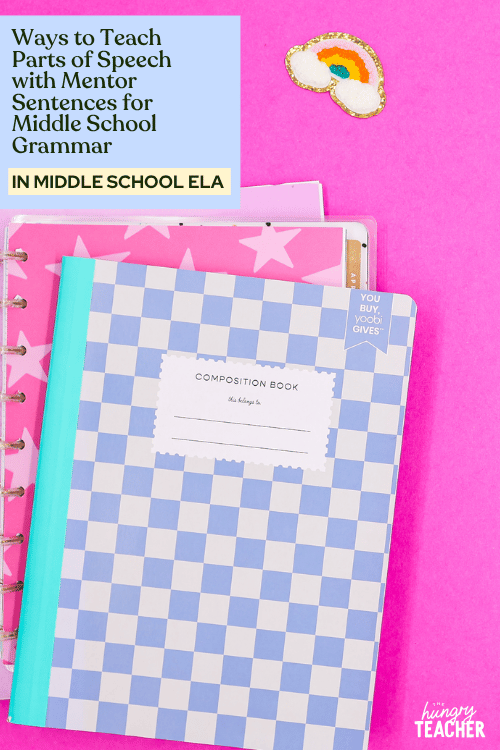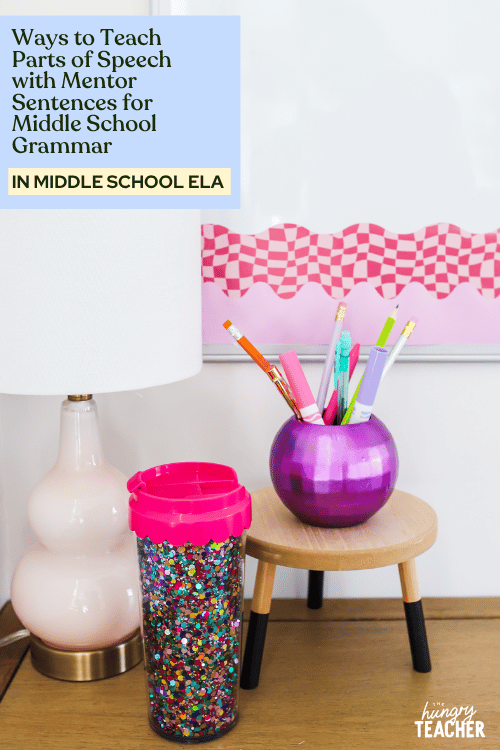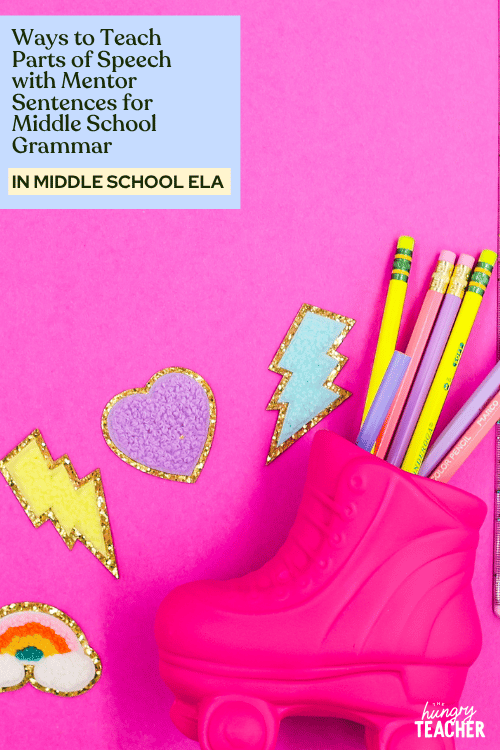Using mentor sentences for grammar instruction is one way to help your middle school learners understand the correct way to speak and write. Mentor sentences or properly written, model sentences are the best tools for teaching parts of speech. Here are some ways to teach parts of speech with mentor sentences.

Label the parts of speech in the mentor sentence
Reviewing parts of speech should be part of grammar lessons even in middle school. Students typically are familiar with nouns, verbs, and adjectives, but identifying adverbs and prepositions among other parts of speech can get a bit tricky. Choose mentor sentences that have a variety of parts of speech, laden with adjectives and adverbs to help your students identify them in the mentor sentence. The mentor sentences for middle school grammar bundle gives your students the perfect sentences to label and analyze. Practice by modeling the work for your students first. One way to label is by listing every word in the mentor sentence and identifying the part of speech for that word. This activity is reserved for Tuesdays in the mentor sentences for middle school bundle.

Work up the sentences with parts of speech
Work it Wednesday is perfect for reinforcing grammar and parts of speech through the mentor sentences for middle school grammar bundle! Students enhance the mentor sentence by adding words based on the grammar skill being practiced. Including additional parts of speech like adjectives or adverbs that add to the imagery of a sentence help with parts of speech practice. Your students will be excited to take a simple (yet well-written) sentence and change the meaning or language with conjunctions, nouns, verbs, adjectives, adverbs, and prepositional phrases.
Identify the roles parts of speech play in a sentence
This is a perfect opportunity to break down the different types of nouns and how different parts of speech function in a sentence. Use the mentor sentences from mentor sentences for middle school grammar bundle to focus not just on nouns, for example, but the roles that different nouns play depending on their place and function in a sentence. Nouns may serve as direct objects, indirect objects, or subjects to name a few options. Identifying subjects (the who or what of the sentence) and predicates (the state of being or action of the sentence) is a perfect place to start. Your students will review and learn that subjects are always nouns and predicates are always verbs, but not all nouns and verbs are subjects and predicates!

Use mentor sentences to have students write their own sentences
Part of recognizing parts of speech is being able to use them correctly in writing. Introduce mentor sentences through the mentor sentences for middle school grammar bundle, and then have your students start to form their own, original sentences. This is a great activity to encourage students to use multiple parts of speech and dynamic word choice. You may also have students write different types of sentences (simple, compound, complex, or compound complex).
Using mentor sentences to teach parts of speech is a fantastic way to incorporate grammar into reading and writing. The mentor sentences for middle school grammar bundle makes this easy with daily activities and target lessons for grammar skills including parts of speech!


